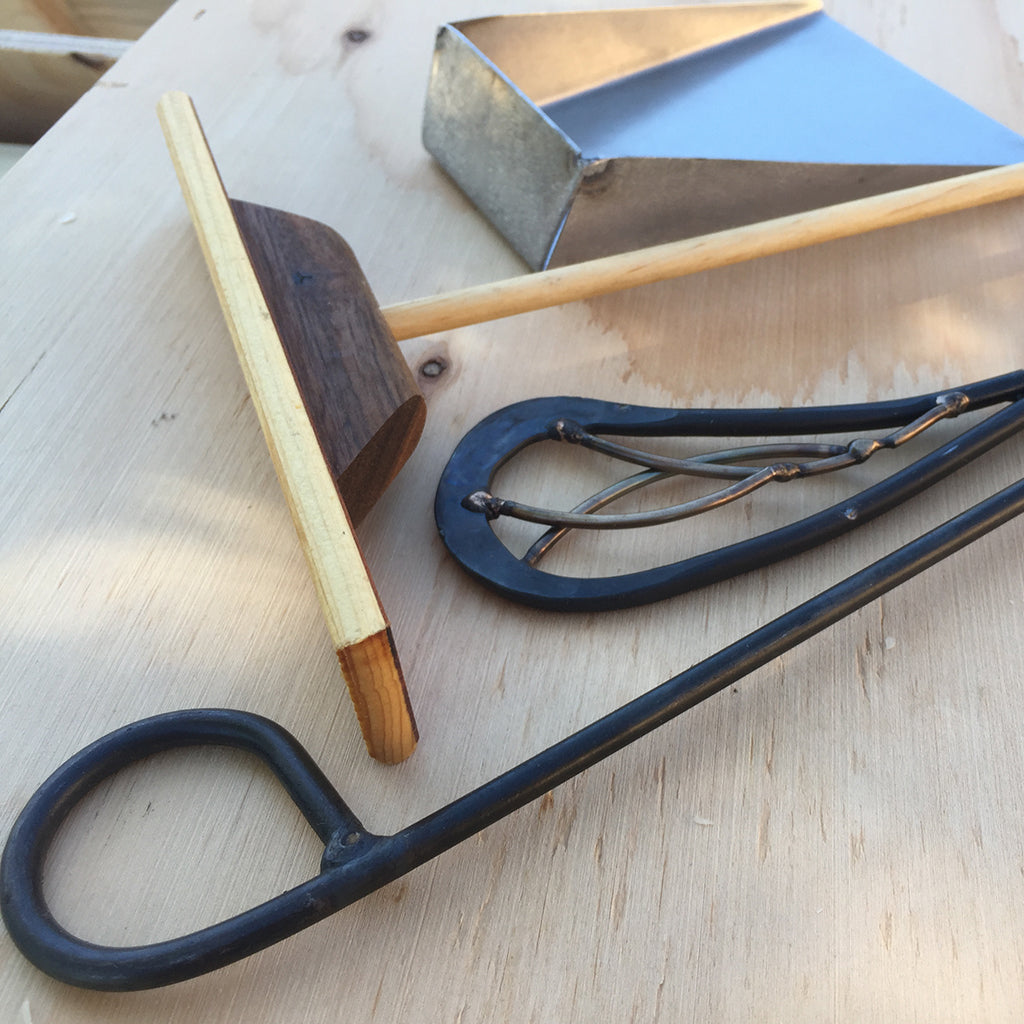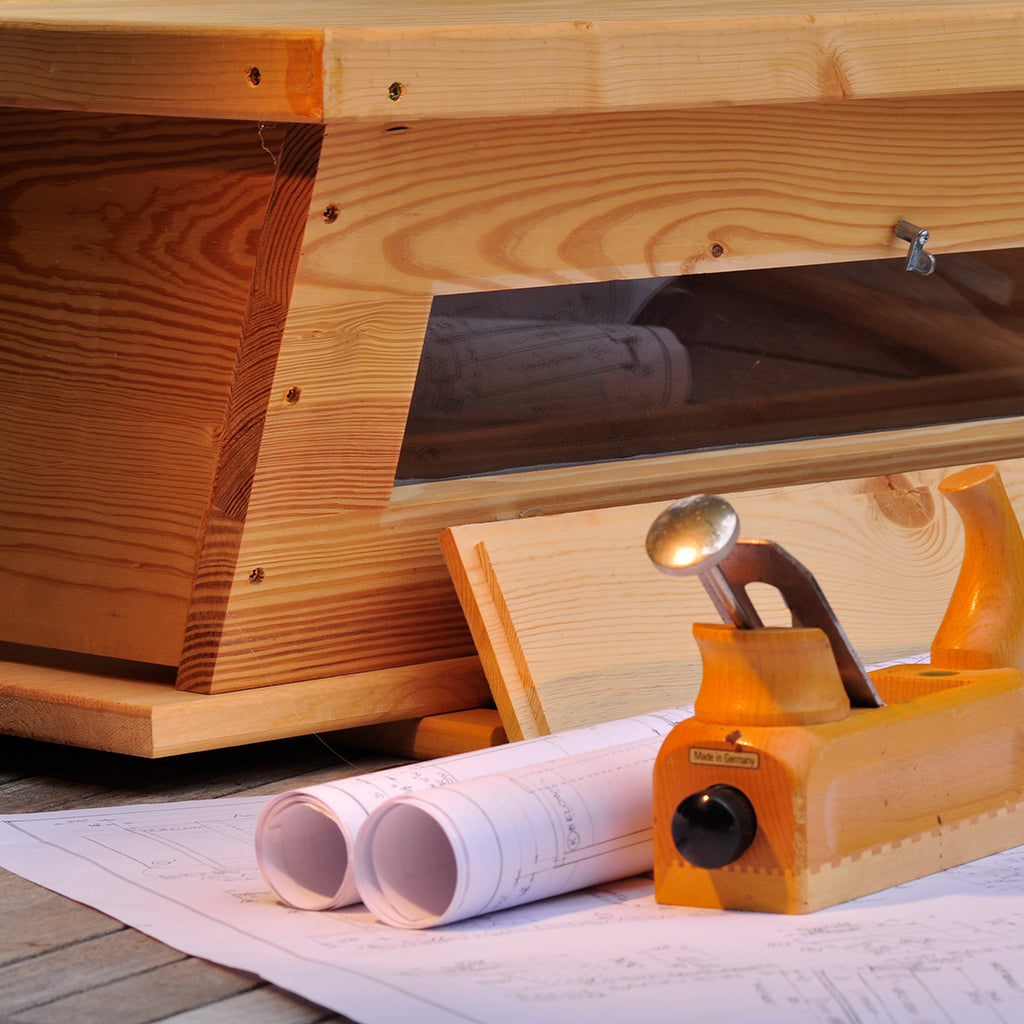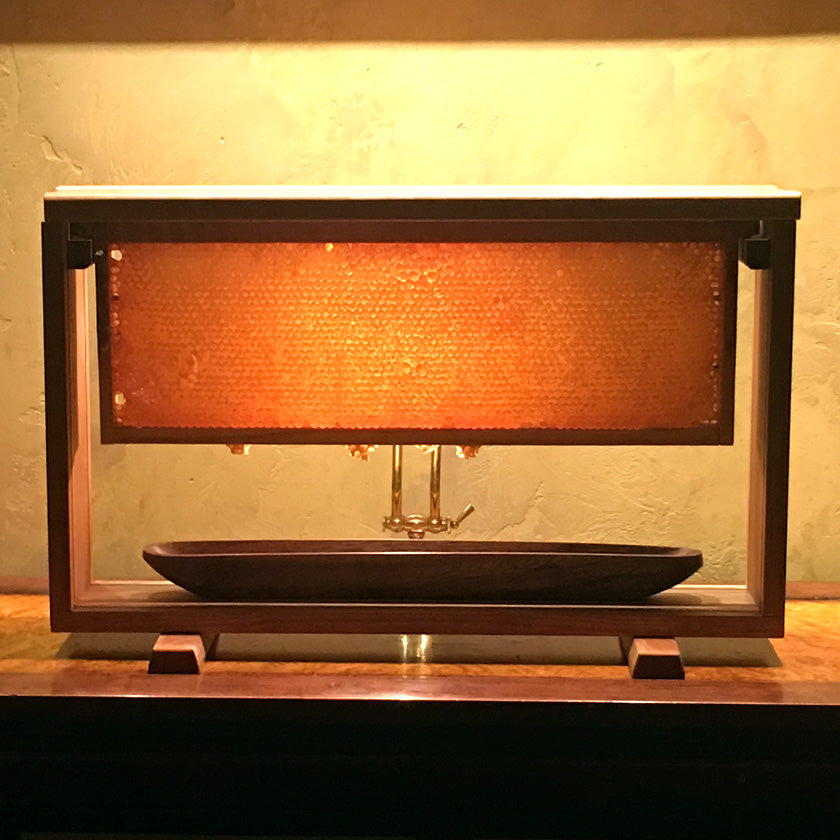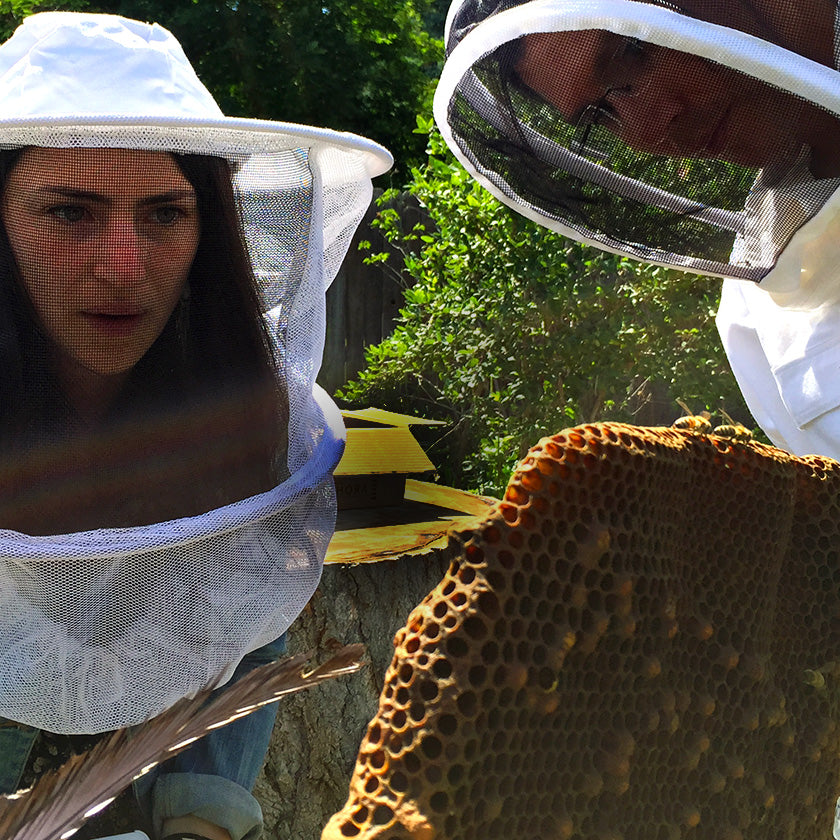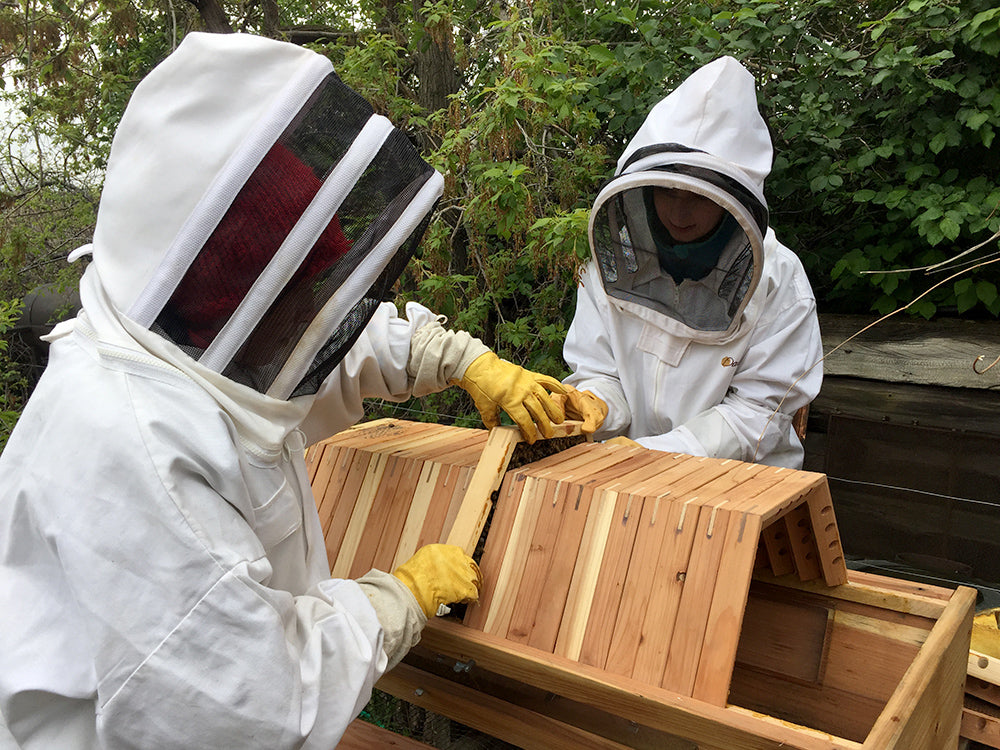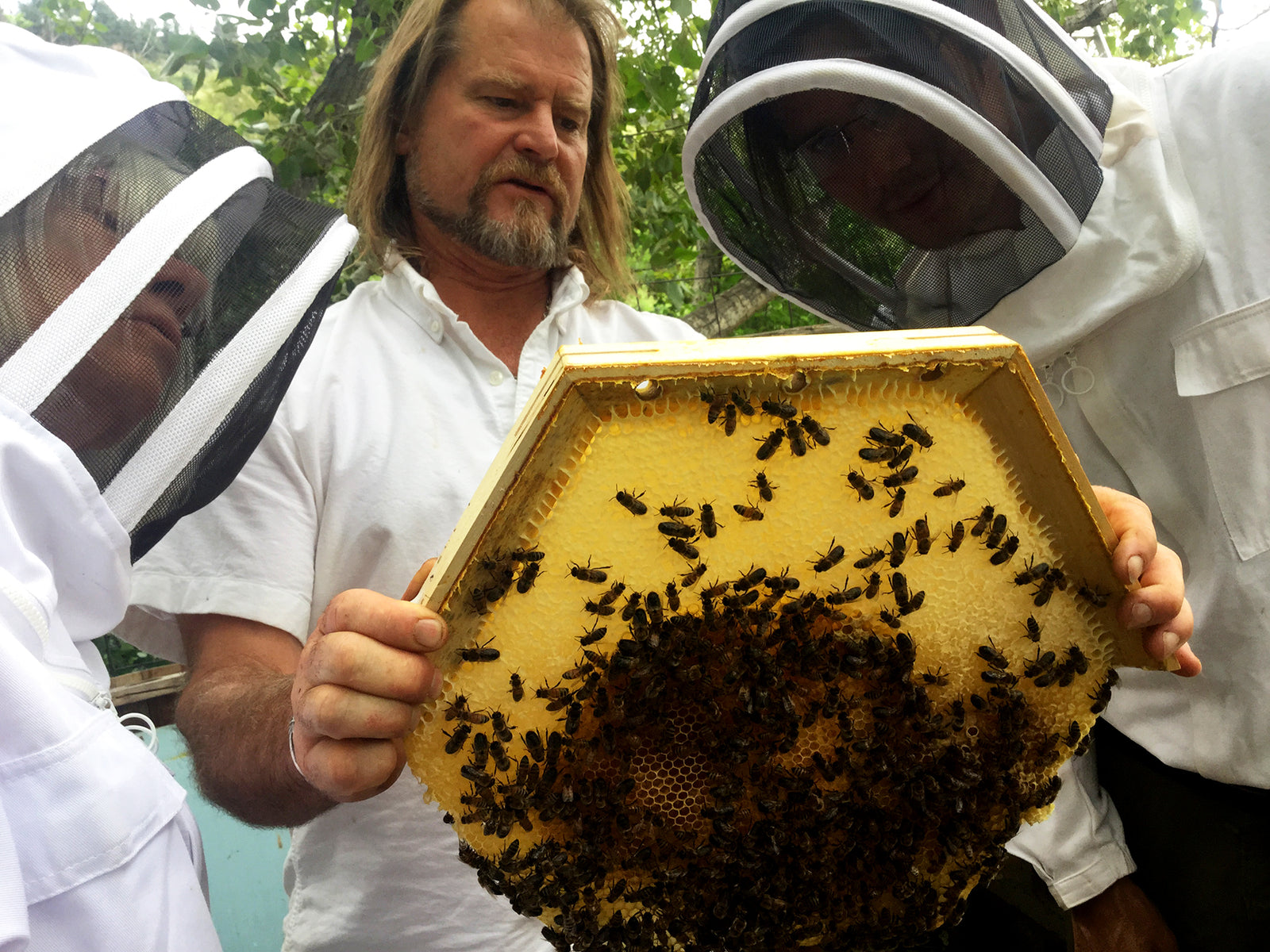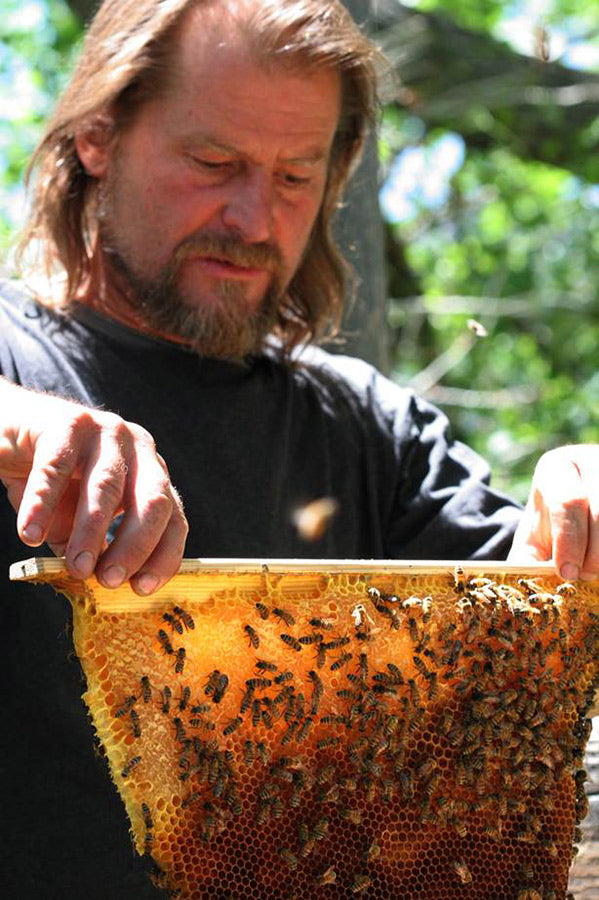Cross comb usually happens for several reasons:
- The hive wasn’t leveled and then re-leveled after a few days when the bees were first installed.
- The spacers weren’t used in the hive correctly.
- Recently we’ve noticed that bees like to build their combs north to south and when the hives are at odd angles, they sometimes build the comb crooked to compensate.
And yes, sometimes everything is in place and triple-checked, but the bees still build crooked comb. This doesn’t happen too often but here are some tips about what to do.
When working with a hive that has cross comb, it's sort of like solving a puzzle. Bit by bit, cut off little sections along the bars in an effort to get the combs in fairly whole pieces. If you have spacers, you can pop them out as you go in order to peek in along the next bar. The least amount of cutting through the honeycombs keeps things as clean as possible.
When you do remove a bar, be sure to scrape off all of the crooked comb pattern on the bar as the bees will start drawing comb again by tracing any residual pattern. They are more likely to build straight on a clean bar. You can also realign any comb that is almost straight. Gently push and straighten the "off" parts of the comb. Be sure to leave any combs that are straight in the hive as a guide for the bees to start building more straight combs.
If a comb breaks and falls in the hive, do not try to grab it -- it will just smoosh into a messy glob. Instead, you can lay the comb that is breaking or has broken onto your open hand to give it as much mass support as possible. Or you can try to support it with hive tools and gently lift it out of the hive.
Remember, if things get messy or if you need to re-organize and think about what to do next, you can use the false back to close up the hive. Always stay 2 steps away from closing up the hive and know that the more relaxed you are the more relaxed the bees will be.
We're working on a 2nd bee DVD where we'll show more of these techniques, so keep your eye out for it!


